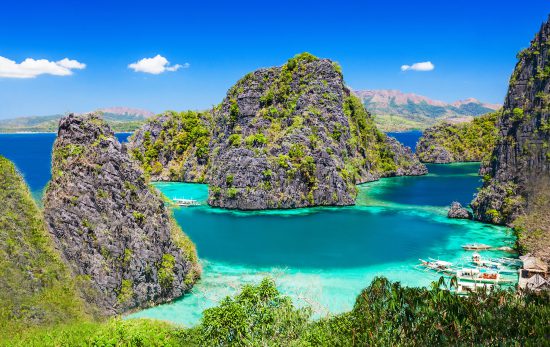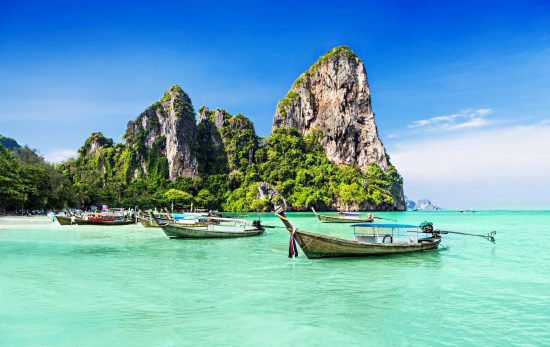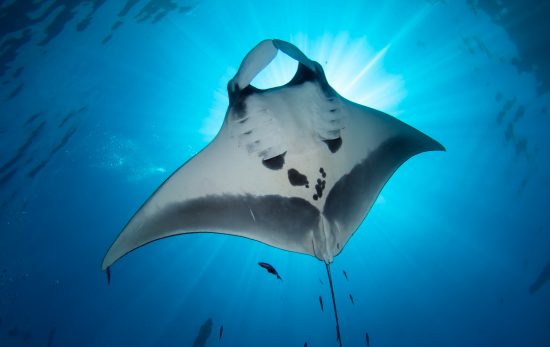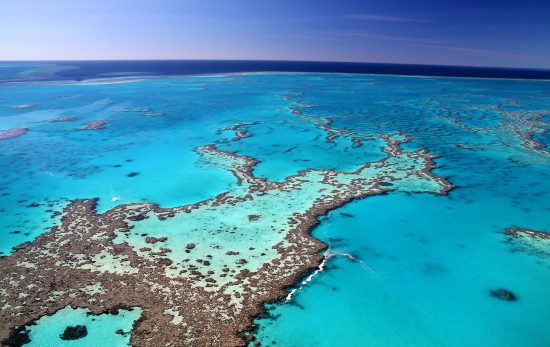Let’s face it – for those living in the Northern Hemisphere, January is one of the year’s worst months. With the holidays gone, there is nothing but a long, cold and dark winter to look forward to. Luckily, scuba divers know how to stave off boredom and the winter blues with travel and adventure. If you’re wondering where to go diving in January, look no further because here come some of our top picks!
Head for the warm waters of the Maldives, Djibouti, and Palau to encounter pelagic species. On the other side of the world, Cuba, the Cayman Islands, and the Caribbean as a whole are experiencing some of the best weather conditions of the year (along with Southern Hemisphere nations like New Zealand). Visit migrating manatees in Florida’s warm Crystal River. Or on the other hand, Antarctica presents a draw for ice divers and those with a penchant for the unusual.
Overall, the first month of the year is a great time to get away, and it also can be a great time to bag bargain rates on flights and accommodation. Here are nine of the best scuba diving destinations in January!

1. Antarctica
One of the most extreme environments on Earth, Antarctica, is just coming into its liveaboard season in January. Not only is this a great season to snag a good deal, but January in Antarctica will also offer you some of the best ice diving you’ll ever experience. If this sounds like the adventure for you, it’s time to slip into that drysuit and embark on your exploration!
There are plenty of dive sites to explore in Antarctica if you’re properly trained (check out the PADI Dry Suit Specialty Course here). Under the ice and beside the icebergs, you can swim alongside penguins, leopard seals, and various gastropods. Petermann Island is a popular location, but Wilhelmina Bay is also worth a visit. Here, humpback whales gather during the first months of the year in order to accumulate fat while feasting on the area’s abundant krill populations.
Do remember that Antarctica’s ice diving is challenging in terms of temperature and overhead environments. Only experienced drysuit divers should make the journey. In addition, the only practical way to dive in Antarctica is by liveaboard, with typical itineraries lasting at least 11 nights. Be sure to check any diving certification requirements with the liveaboard operator before booking.
Editor’s Recommended Liveaboard: MS Sula

2. Palau
Palau offers everything a tropical diver might want in a small space. There’s shark diving, wreck diving, and beautiful, soft coral reefs. In addition, heavy currents sweep in pelagic species, like manta rays, sea turtles, and reef sharks. Plus, coral beds make the perfect houses for macro species and huge schools of tropical fish.
You can dive in Palau year-round (and we would recommend it during any month of the year!). However, January is a great time to hop on a liveaboard in this South Pacific country. This month falls squarely within the peak diving season, which runs from October to May. During this time of year, visibility is amazing, and water temperatures average out at a balmy 83°F (28°C).
A liveaboard trip is highly recommended to get the most out of your time in Palau. In this way, you’ll see all the best and most remote sites in one trip and enjoy the scuba diving holiday of your dreams.
Editor’s Recommended Liveaboard: Ocean Hunter III

3. Ari Atoll, Maldives
Known for its whale sharks and manta rays, the 105 islands that comprise the Ari Atoll represent the most popular liveaboard destination in the Maldives. With the number of pelagic species to see, diving in the Indian Ocean doesn’t get much better than in the Ari Atoll.
Most of the dive sites in the central part of the Maldives are not protected by walls or coral reefs. Rather, the region consists of thilas (pinnacles) and kandus (channels) that are perfect for drift diving. Because of the exposed nature of many of these dive sites, currents can be quite strong. A PADI Advanced Open Water Diver certification, Drift Diving Specialty certification, or experience in diving in currents is recommended.
The atoll’s climate has warm average temperatures with equally comfortable water temperatures (77-86°F / 25-30°C). While diving is accessible year-round, some seasons are better than others. From December to March, dry weather and calm seas arrive during the northeast monsoon, giving you ideal underwater conditions for scuba diving in January.
Editor’s Recommended Liveaboard: Scubaspa Ying

4. Cayman Islands
Sea turtles, stingrays, critters, colorful reef fish and more are promised on a Cayman Islands scuba diving adventure. Unique marine life and spectacular underwater topography draw thousands of scuba divers to these Caribbean islands annually. And, it’s one of the best tropical vacations in January!
In addition to the ever-famous Stingray City, where the rays are said to be almost tame, numerous dive sites are sure to hold your interest. There’s the pinnacle of Babylon or the great drop-offs called Wilderness Wall and Bloody Bay Wall. Plus, the wreck diving is pretty good here, too. Captain Keith Tibbets and the Kittiwake, which is often described as a ghost ship, are a couple of the most photographed wrecks in the world.
Keep in mind that the Cayman Islands are inside the hurricane belt. While the water temperature remains welcoming year-round, the seas can be rough and inhospitable from June to November. Book your trip to go diving in January for the best possible weather and sea conditions.
Editor’s Recommended Liveaboard: Cayman Aggressor IV

5. Djibouti
In this small African nation, volcanos and deserts create landscapes resembling an alien planet. As a relative newcomer to the diving scene, it’s more isolated than the busier Red Sea resorts that are located further to the north. Book your Djibouti trip for something special between November and February. You’ll have some of the most unforgettable diving experiences, like possible encounters with juvenile whale sharks.
Divers are usually impressed by the size of the ocean’s biggest fish, but in the Gulf of Tadjoura, it’s all about the younger whale sharks — some are just six feet (two meters) long. There are also manta rays, reef sharks, nurse sharks, and over 200 species of corals and fish. So you can check off several bucket list items in one trip! Even the topography is a wonder to behold, with underwater volcanos, dramatic walls, and a site between three tectonic plates (The Crack) which literally changes from dive to dive.
As well as whale sharks, January diving in Djibouti promises lots of sunshine but with more bearable air temperatures (around 75-84°F / 24-29°C). Strong currents at some sites attract big pelagic species. This can be challenging, so be sure to choose an itinerary to suit your experience. Taking the Advanced Open Water Diver course or the Drift Diver Specialty course is a great way to get prepared for your trip.
Editor’s Recommended Liveaboard: MSY Elegante

6. Poor Knights Islands, New Zealand
Located in the Southern Hemisphere, New Zealand’s summer peaks in January, making this the perfect time to connect with nature above and below the waves. Popular diving hotspots include Kaikoura (plenty of mammalian action), Milford Sound (infamous black coral), and the ruggedly charming Mercury Islands.
The Poor Knights is famous for drop-offs, tunnels, walls, and even the world’s largest sea cave in the northeast. Scuba vacations here are possible year-round but go diving in January, and you could witness something spectacular. Vast numbers of mating stingrays congregate beneath archways. Then, hungry orcas soon follow to create an underwater display worthy of any diver’s bucket list (think NatGeo right before your eyes). Oh, and don’t forget about the dolphins, turtles, and humpback whales!
Poor Knights Islands is in New Zealand’s warmest region. In January, water temperatures peak at 68-74°F (20-23°C). Bear in mind that plankton blooms reduce summer visibility – but that brings in the mighty pelagic species.
Editor’s Recommended Dive Center: Dive! Tutukaka

7. Crystal River, Florida
Although it’s known as the Sunshine State, January is the coldest month in Florida. That being said, what you’ll encounter at this time of year makes the chill more than worth it! In winter, as temperatures drop in the Gulf of Mexico, hundreds upon hundreds of manatees swim into Crystal River, seeking respite in the warm freshwater springs.
This is the only place in North America where you can legally swim with manatees. Three Sisters Springs and Homosassa Springs are two of the best sites; try to plan an early morning trip when these gentle creatures are most active and playful. For more wish list dives in Florida, book a drift at Rainbow River, or explore the prehistoric Devil’s Den caverns — both less than an hour’s drive away.
Although January air temperatures at Crystal River fluctuate between 43-70°F (6-21°C), the spring waters are a consistently comfortable 72°F (22°C) year-round. You can also dive here in summer; you just won’t see quite as much manatee action.
Editor’s Recommended Dive Center: Crystal River Watersports

8. Bonaire
As the winter chill envelops much of the Northern Hemisphere, the sunny shores of Bonaire call underwater adventurers seeking an unforgettable scuba diving experience. While Bonaire is renowned for its year-round diving opportunities, the month of January stands out as an exceptionally appealing time to explore the vibrant marine ecosystems. From its crystal-clear waters to its diverse marine life, Bonaire has a lot to offer to scuba enthusiasts during this time of the year.
The water temperature hovers around a comfortable 79-82°F (26-28°C), providing a refreshing escape from the winter blues while ensuring you won’t be too chilly during your underwater excursions. The relatively low rainfall during this month means excellent visibility, allowing divers to fully appreciate the vibrant underwater landscapes and marine inhabitants.
Bonaire’s protected marine areas have nurtured some of the healthiest coral reefs in the Caribbean. During January, the coral reefs are thriving, displaying an explosion of colors and forms. One of the highlights of diving in Bonaire during January is the chance to witness the mesmerizing courtship and mating rituals of various marine species. This makes January particularly enchanting for underwater photographers.
Editor’s Recommended Dive Center: Buddy Dive Resort

9. Belize
Belize is a year-round paradise for divers, but the month of January holds a special allure for those looking to escape the cold and delve into the mesmerizing depths of its azure waters. From extraordinary marine biodiversity to pleasant weather conditions, Belize offers an unforgettable scuba diving experience in the heart of winter.
January graces Belize with pleasantly warm temperatures and calm seas, creating an inviting atmosphere for scuba divers. With daytime temperatures averaging around 79-83°F (26-28°C) and the sea temperature comfortably hovering around 79°F (26°C), divers can revel in the perfect balance between tropical warmth and refreshing ocean waters.
The crystal-clear waters of Belize offer prime visibility, allowing divers to witness the impressive marine biodiversity that resides in the Belize Barrier Reef System, a UNESCO World Heritage Site. During this season, you’re likely to encounter majestic creatures, such as nurse sharks, stingrays, and even the elusive whale shark. Schools of colorful reef fish, elegant eagle rays, and playful dolphins add to the breathtaking underwater ballet that unfolds before your eyes.
Belize boasts an array of dive sites for divers of all levels, making it an ideal destination for both novices and seasoned professionals. From the Great Blue Hole, a world-renowned sinkhole and an underwater wonder, to the vibrant coral gardens of Hol Chan Marine Reserve, there’s no shortage of captivating sites to explore.
So, if you’re seeking an underwater adventure that combines natural beauty with warm waters, Belize should undoubtedly be on your list of must-visit destinations.
Editor’s Recommended Liveaboard: Belize Aggressor IV
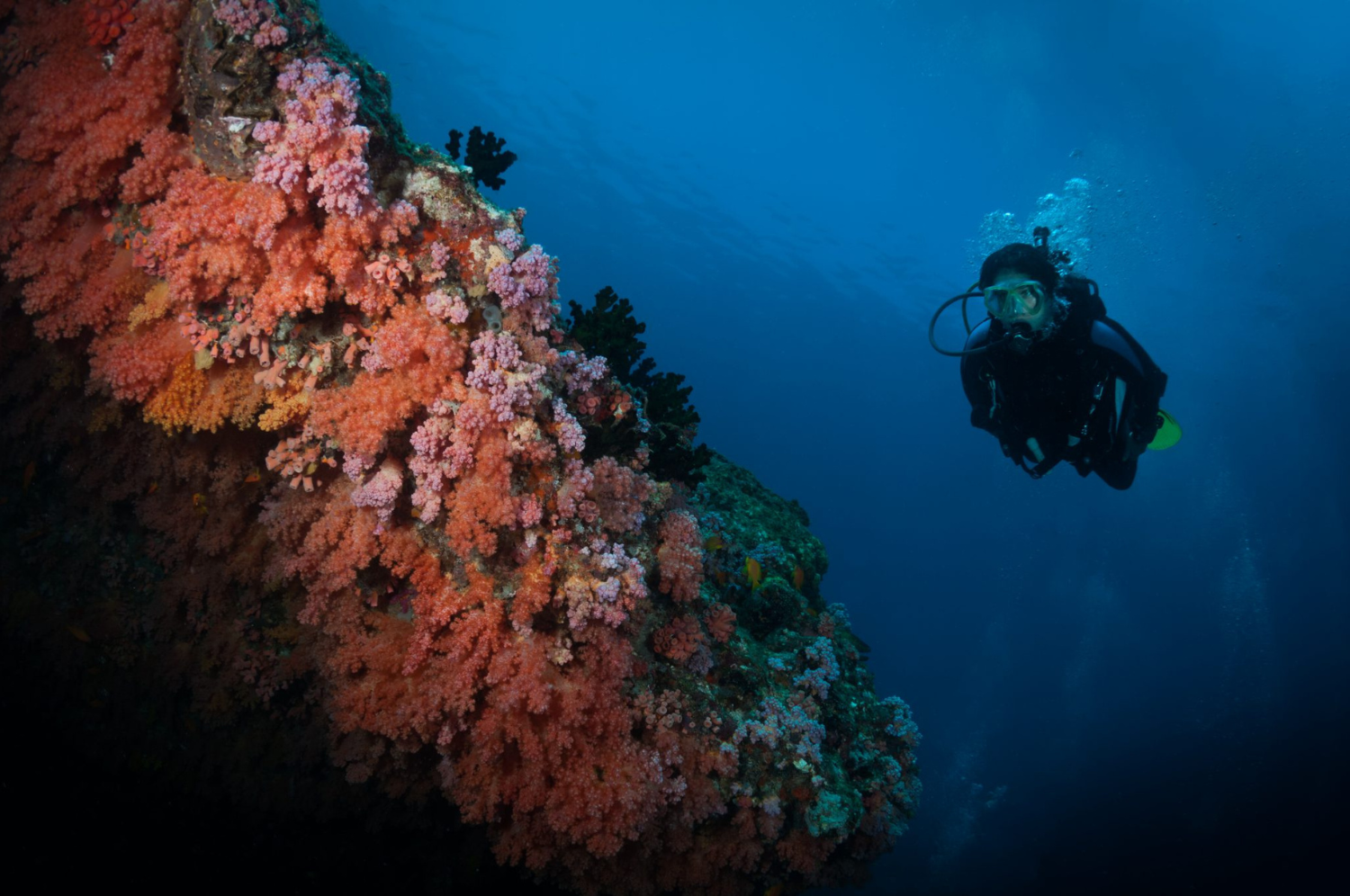
Discover the Best Diving in January
If you’re considering taking a January scuba diving trip, check out the PADI Adventures App for more inspiration. Or, for more advice on which of these destinations is right for you, call or chat with an experienced and knowledgeable PADI Travel agent today. Our team is on standby 24/7 to help book the best scuba diving vacation for you.
